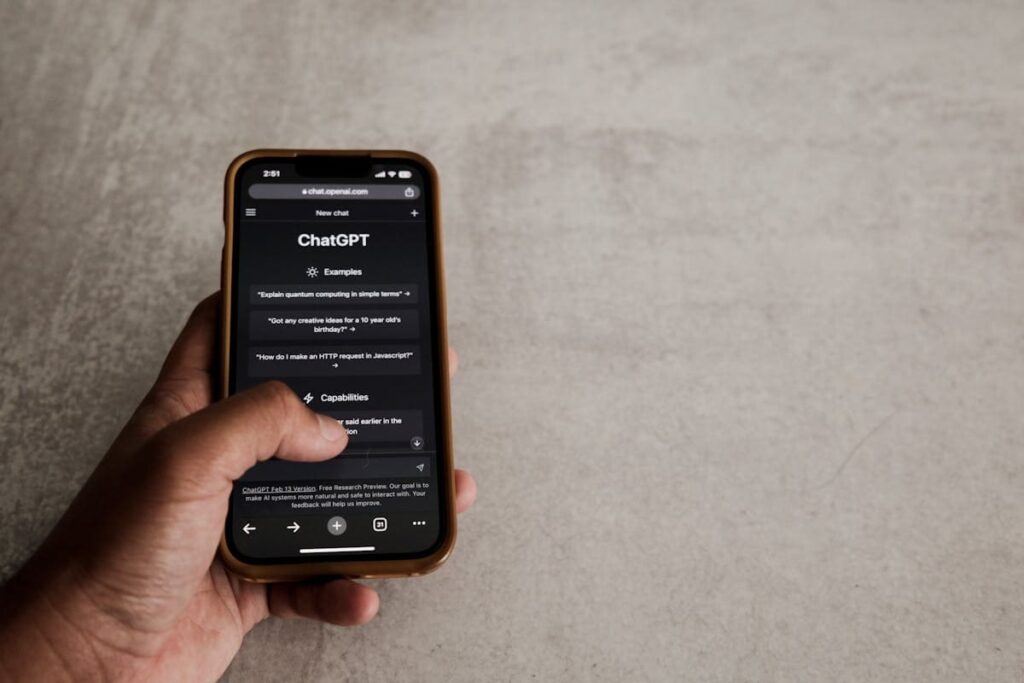When most people think of ChatGPT, they picture quick answers, blog posts, or maybe even quirky poems. But behind closed doors, businesses are quietly turning this AI chatbot into a serious competitive edge. Far from being just a writing assistant, ChatGPT is reshaping industries you wouldn’t expect—consulting, accounting, elder care, even luxury retail.
From automating 25-page tax reports to negotiating bills with service providers, companies are finding creative ways to put AI chatbots to work. And the truth is, many of these uses aren’t being advertised. They’re tucked away in internal systems, embedded in workflows, and quietly saving businesses millions.
In this article, we’ll uncover seven surprising ways companies are secretly using ChatGPT—examples that go well beyond the hype and into the hidden reality of AI adoption.
1. Consulting Firms’ Hidden Power Tool
Management consulting has always been about speed, insight, and access to knowledge. Firms like McKinsey, BCG, and Deloitte have quietly built their own ChatGPT-powered assistants—designed not for the public, but for their consultants.
McKinsey’s internal chatbot, nicknamed Lilli, acts as a research assistant that can instantly pull insights from decades of the firm’s proprietary knowledge base. Instead of spending hours sifting through slide decks or internal reports, consultants can simply ask Lilli a question and receive a synthesized, reference-backed answer.
BCG has taken things even further with GENE, its generative AI platform. Employees have already created more than 18,000 custom GPTs inside the firm, tailoring them for everything from industry-specific research to automated slide creation. Deloitte and PwC have also rolled out similar tools, with adoption rates in the tens of thousands.
The surprising part? These tools aren’t client-facing. They’re strictly behind the scenes, built to reduce grunt work, prepare presentations faster, and give consultants more time to focus on strategy. For clients, the AI revolution isn’t visible—but it’s definitely shaping the advice they receive.
2. Accounting Giants Automating Complex Tax Advice
If there’s one industry known for complexity, it’s accounting—and ChatGPT is making its mark here in surprising ways. One of the boldest moves comes from KPMG, which developed a private AI tool known as TaxBot.
Instead of feeding it a few prompts, KPMG engineers wrote a massive 100-page prompt—essentially a detailed set of instructions that define how the AI should interpret tax law, structure answers, and deliver compliance-ready advice. The result? TaxBot can draft a 25-page advisory report in just one day, a task that normally takes human teams up to two weeks.
This shift doesn’t mean accountants are out of a job. In fact, partners at KPMG say the tool works best as a first draft engine—giving experts a foundation to refine and validate. But what’s surprising is just how quietly this is happening. Clients rarely see the AI in action, but they do benefit from faster turnaround times and potentially lower costs.
Behind the scenes, accounting giants are using ChatGPT not just for productivity, but as a competitive advantage in winning new business.
3. Elder Care Facilities Streamlining Operations
At first glance, elder care might seem like the last place you’d expect to find AI chatbots. After all, this is an industry built on human connection and trust. But some care providers are quietly turning to ChatGPT to improve operations—not by replacing people, but by freeing them up to focus on what matters most.
Take Radfield Home Care, a UK-based care provider. They’ve integrated ChatGPT into multiple areas of their business: marketing, HR, staff training, and even daily operations. By combining AI with custom APIs, they’ve built a searchable operations database, making it easier for staff to access critical information instantly.
Looking ahead, they’re exploring AI-powered logistics and home monitoring tools—applications that could help coordinate staff schedules or track care quality more efficiently. The emphasis is always clear: AI supports the caregivers, rather than taking their place.
The surprising part is how quietly this is happening. Families don’t see ChatGPT at work when they visit a loved one, but the smoother scheduling, faster training, and better communication they experience are often powered by AI behind the scenes.
4. ChatGPT as a Negotiator
Imagine having an AI that argues on your behalf. That’s exactly what DoNotPay, the legal tech startup, has been testing with ChatGPT-powered negotiation bots.
Originally famous for helping people fight parking tickets, DoNotPay has expanded into bill negotiations. Using ChatGPT, their AI can chat with customer service reps, push back against unfair fees, and even secure discounts for users. In other words, it acts like a personal advocate that never gets tired or flustered.
The surprising twist? Many companies don’t even realize they’re negotiating with AI. To them, it looks like a persistent customer typing on the other end of the chat. For users, it can mean significant savings on phone bills, subscriptions, or even medical expenses.
This approach also highlights a bigger shift: AI isn’t just a productivity tool—it’s becoming a consumer power tool, leveling the playing field in negotiations where individuals usually have less leverage.
5. Turning the Tables on Scammers
For years, scammers have used email and messaging tricks to steal money and data. Now, some businesses and researchers are using ChatGPT to flip the script—deploying AI not as a defense system, but as a decoy that wastes scammers’ time.
The approach is simple but clever: when a phishing email comes in, instead of ignoring it, an AI chatbot engages the scammer in long, pointless conversations. It can ask endless questions, generate fake details, or intentionally misinterpret instructions—all while keeping the scammer occupied.
This tactic doesn’t stop scams at the source, but it does reduce their impact by burning the attackers’ resources. Every minute a scammer spends arguing with an AI chatbot is a minute they’re not targeting a real person.
It’s a surprising use case because it reframes AI from being purely defensive (spam filters, firewalls) into something more proactive—an offensive tool that fights back in the digital arms race.
6. Wealth Managers Relying on AI Research
The finance industry thrives on research, speed, and precision—three areas where ChatGPT is quietly making a huge impact. While most clients never see it, wealth managers and analysts are increasingly leaning on AI to process information and guide investment decisions.
One striking example comes from an independent investment expert who used ChatGPT to analyze Arm’s IPO in depth. The AI helped him surface insights faster than traditional research, ultimately contributing to a 30% return on the investment.
Big institutions are taking notice, too. Morgan Stanley has deployed ChatGPT-based tools to support its financial advisors, giving them instant access to curated research and internal insights. Standard Chartered is using similar systems to streamline due diligence and market analysis for its global client base.
The surprising part? Most of this AI work happens behind the curtain. Clients still receive polished reports and personalized advice, but much of the heavy lifting—sifting through filings, analyst notes, and market chatter—is increasingly powered by ChatGPT.
7. AI as Luxury Retail’s Secret Personal Shopper
Luxury shopping is built on personalization. High-end brands pride themselves on offering VIP treatment that feels exclusive and tailored. What most shoppers don’t realize is that some of this “personal touch” is now quietly powered by ChatGPT.
Take Kering, the group behind Gucci and Balenciaga. They’ve tested an AI-driven concierge called Madeline on their KNXT platform. Instead of generic chat support, Madeline functions like a digital personal shopper—suggesting outfits, recommending accessories, and remembering customer preferences across sessions.
For shoppers, the experience feels like having a knowledgeable stylist on call. For retailers, it’s a way to scale luxury clienteling without hiring thousands of additional staff. The AI can analyze purchase histories, anticipate customer needs, and even adjust tone to match different clientele.
The twist is that most customers never realize they’re talking to a machine. In an industry where discretion and seamless service are everything, ChatGPT is slipping quietly into a role that feels almost indistinguishable from a human advisor.
Conclusion
The public perception of ChatGPT often revolves around writing essays, drafting emails, or answering trivia. But as these examples show, businesses are putting AI chatbots to work in ways that are far more surprising—and far more powerful.
From consulting firms mining decades of knowledge, to accountants drafting complex tax advice, to elder care providers running smoother operations, ChatGPT is quietly embedded in industries where accuracy and trust are paramount. It’s even showing up as a negotiator, a scam-fighter, a financial analyst, and a luxury personal shopper.
The truth is, most of these applications are invisible to the end user. Clients see faster turnaround times, smoother services, and more personalized experiences—without realizing that an AI chatbot is working behind the curtain.
What’s clear is that ChatGPT has moved beyond being a “productivity hack.” It’s becoming a strategic advantage. And if companies are already using it in these surprising, behind-the-scenes ways, the next question is: how long before AI is no longer a secret weapon, but an open expectation?
FAQs
1. How are businesses using ChatGPT in ways customers don’t see?
Many companies use ChatGPT internally—for research, report drafting, staff training, and client preparation—without disclosing it. The end result is faster service and better output, but the AI often works behind the scenes.
2. Is ChatGPT replacing employees in consulting or accounting?
Not directly. Firms like McKinsey and KPMG use ChatGPT as a first-draft tool, which speeds up routine tasks. Human experts still refine and validate the results, ensuring quality and compliance.
3. Can AI chatbots like ChatGPT really negotiate bills?
Yes. Tools such as DoNotPay use ChatGPT to chat with customer service reps and negotiate discounts. Many companies don’t realize they’re talking to AI during these interactions.
4. Why is ChatGPT being used in elder care facilities?
Providers use ChatGPT to streamline operations, HR, and training. This allows caregivers to spend more time with patients while reducing time spent on admin tasks.
5. What’s the most surprising industry using ChatGPT today?
Luxury retail is a standout example—brands like Kering are quietly deploying ChatGPT-driven assistants that act as personal shoppers, creating seamless, VIP-like experiences.


